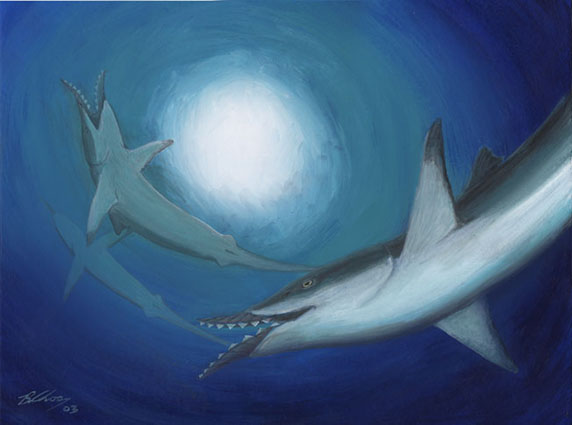
c. 310 million years ago, Illinois, USA
A trio of Edestus cruise gracefully through a shallow sea, constantly on the lookout for potential prey.
These strange creatures belonged to a group of late Paleozoic cartilaginous fishes called the Eugeneodontiformes. Some of the most bizarrre and puzzling tooth-fossils ever discovered have been produced by members of this group, including Edestus. There is nothing alive today quite like them although studies suggest that their closest living relatives are the holocephalians (chimeras) rather than the elasmobranchs (sharks & rays).
The teeth of Edestus were arranged in a single row, the bases of each tooth being greatly enlarged and joined together in a curved symphysical whorl. Like modern sharks, Edestus grew new teeth throughout its life, but instead of shedding the old teeth, the entire whorl grew outwards as each new tooth was formed. This gave the shark a pair of saw-edged shears that projected from the mouth, each composed of a series of teeth and tooth-bases with the youngest teeth at the base and the oldest at the tips.
Aside from the teeth, we know nothing of the fish's appearance so this reconstruction is almost entirely conjectural. I imagined this fish to have been the Carboniferous equivalent of a modern billfish, using its teeth to stun fast schooling prey.
The species depicted in the picture is Edestus heinrichii which grew to about 3 metres in length. However a form discovered in Oklahoma, E. giganteus, may have been over twice as large.
Art and text © Brian Choo 2004